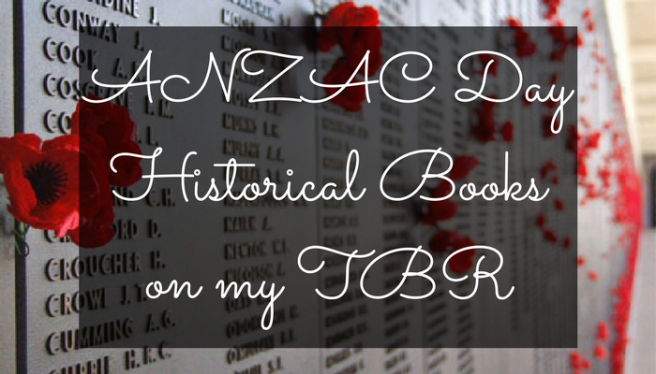
So as we are celebrating ANZAC Day here in Australia I thought today would be a good day to talk about War related Historical Fiction & Non-Fiction Books that are on my TBR.
So I enjoy reading Historical Fiction but I don’t read it enough! I really want to read more soon, but as I only own 1 other Historical Fiction that I have yet to read and I’m trying not to buy as many books until I get my TBR shelves down, I won’t be getting to these straight away but soon hopefully! I also want to try and get more into Non-Fiction books, especially War Non-Fiction books as war, especially World War II really interests me.
I have read The Book Thief by Markus Zusak and Traitor’s Gate by Michael Ridpath. Both were really good books! The Book Thief is so emotional and Traitor’s Gate is really interesting and different.
Now onto the books on my TBR.


All The Light We Cannot See by Anthony Doerr

From the highly acclaimed, multiple award-winning Anthony Doerr, the beautiful, stunningly ambitious instant New York Times bestseller about a blind French girl and a German boy whose paths collide in occupied France as both try to survive the devastation of World War II.
Marie-Laure lives with her father in Paris near the Museum of Natural History, where he works as the master of its thousands of locks. When she is six, Marie-Laure goes blind and her father builds a perfect miniature of their neighborhood so she can memorize it by touch and navigate her way home. When she is twelve, the Nazis occupy Paris and father and daughter flee to the walled citadel of Saint-Malo, where Marie-Laure’s reclusive great-uncle lives in a tall house by the sea. With them they carry what might be the museum’s most valuable and dangerous jewel.
In a mining town in Germany, the orphan Werner grows up with his younger sister, enchanted by a crude radio they find. Werner becomes an expert at building and fixing these crucial new instruments, a talent that wins him a place at a brutal academy for Hitler Youth, then a special assignment to track the resistance. More and more aware of the human cost of his intelligence, Werner travels through the heart of the war and, finally, into Saint-Malo, where his story and Marie-Laure’s converge.
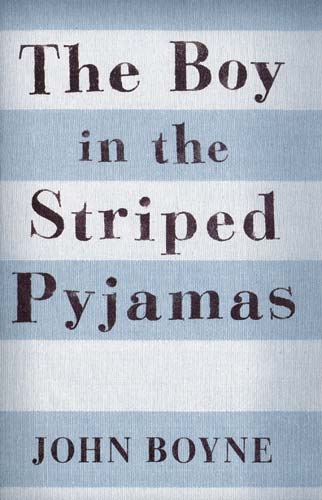
The Boy in the Striped Pyjamas by John Boyne

Berlin, 1942 : When Bruno returns home from school one day, he discovers that his belongings are being packed in crates. His father has received a promotion and the family must move to a new house far, far away, where there is no one to play with and nothing to do. A tall fence stretches as far as the eye can see and cuts him off from the strange people in the distance.
But Bruno longs to be an explorer and decides that there must be more to this desolate new place than meets the eye. While exploring his new environment, he meets another boy whose life and circumstances are very different from his own, and their meeting results in a friendship that has devastating consequences.
Code Name Verity Duology by Elizabeth Wein

I have two weeks. You’ll shoot me at the end no matter what I do.
That’s what you do to enemy agents. It’s what we do to enemy agents. But I look at all the dark and twisted roads ahead and cooperation is the easy way out. Possibly the only way out for a girl caught red-handed doing dirty work like mine – and I will do anything, anything to avoid SS-Hauptsturmführer von Linden interrogating me again.
He has said that I can have as much paper as I need. All I have to do is cough up everything I can remember about the British War Effort. And I’m going to. But the story of how I came to be here starts with my friend Maddie. She is the pilot who flew me into France – an Allied Invasion of Two.
We are a sensational team.

Catch-22 by Joseph Heller

At the heart of Catch-22 resides the incomparable, malingering bombardier, Yossarian, a hero endlessly inventive in his schemes to save his skin from the horrible chances of war.
His problem is Colonel Cathcart, who keeps raising the number of missions the men must fly to complete their service. Yet if Yossarian makes any attempts to excuse himself from the perilous missions that he’s committed to flying, he’s trapped by the Great Loyalty Oath Crusade, the bureaucratic rule from which the book takes its title: a man is considered insane if he willingly continues to fly dangerous combat missions, but if he makes the necessary formal request to be relieved of such missions, the very act of making the request proves that he’s sane and therefore, ineligible to be relieved.
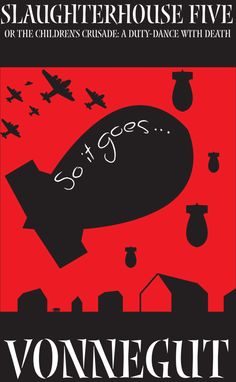
Slaughterhouse-Five by Kurt Vonnegut

Kurt Vonnegut’s absurdist classic Slaughterhouse-Five introduces us to Billy Pilgrim, a man who becomes unstuck in time after he is abducted by aliens from the planet Tralfamadore. In a plot-scrambling display of virtuosity, we follow Pilgrim simultaneously through all phases of his life, concentrating on his (and Vonnegut’s) shattering experience as an American prisoner of war who witnesses the firebombing of Dresden.
Don’t let the ease of reading fool you – Vonnegut’s isn’t a conventional, or simple, novel. He writes, “There are almost no characters in this story, and almost no dramatic confrontations, because most of the people in it are so sick, and so much the listless playthings of enormous forces. One of the main effects of war, after all, is that people are discouraged from being characters.”
Slaughterhouse-Five is not only Vonnegut’s most powerful book, it is also as important as any written since 1945. Like Catch- 22, it fashions the author’s experiences in the Second World War into an eloquent and deeply funny plea against butchery in the service of authority. Slaughterhouse-Five boasts the same imagination, humanity, and gleeful appreciation of the absurd found in Vonnegut’s other works, but the book’s basis in rock-hard, tragic fact gives it a unique poignancy – and humor.
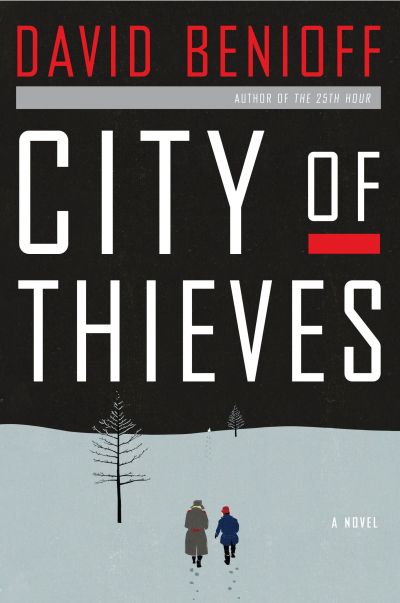
City of Thieves by David Benioff

From the critically acclaimed author of The 25th Hour, a captivating novel about war, courage, survival — and a remarkable friendship that ripples across a lifetime.
During the Nazis’ brutal siege of Leningrad, Lev Beniov is arrested for looting and thrown into the same cell as a handsome deserter named Kolya. Instead of being executed, Lev and Kolya are given a shot at saving their own lives by complying with an outrageous directive: secure a dozen eggs for a powerful Soviet colonel to use in his daughter’s wedding cake. In a city cut off from all supplies and suffering unbelievable deprivation, Lev and Kolya embark on a hunt through the dire lawlessness of Leningrad and behind enemy lines to find the impossible.
By turns insightful and funny, thrilling and terrifying, City of Thieves is a gripping, cinematic World War II adventure and an intimate coming-of-age story with an utterly contemporary feel for how boys become men.

Maus Duology by Art Spiegelman

A story of a Jewish survivor of Hitler’s Europe and his son, a cartoonist who tries to come to terms with his father’s story and history itself.
This is a graphical novel and I want to try and start reading graphic novels.
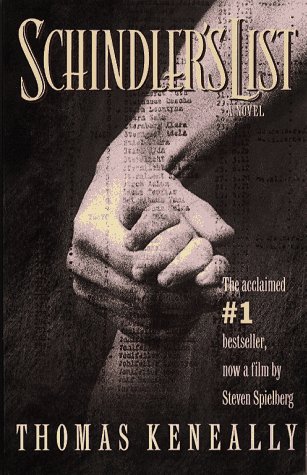
Schindler’s List by Thomas Keneally

During the Holocaust at the German concentration camp near Plaszow, thousands of Jews lost their lives at the hands of the Nazis. More than a thousand others would have been counted among the dead if not for a womanizing, heavydrinking, German-Catholic industrialist and Nazi Party member named Oskar Schindler.
One of the most remarkable narratives of the Holocaust, Schindler’s List masterfully recreates the daring exploits of Schindler, who used his enormous fortune to build a factory near the concentration camp and saved the lives of over 1,300 Jews. An absorbing, suspenseful and moving account of Oskar Schindler’s legacy of life, this is an unforgettable audio program.

The Rise and Fall of the Third Reich: A history of Nazi Germany

Hitler boasted that The Third Reich would last a thousand years. It lasted only 12. But those 12 years contained some of the most catastrophic events Western civilization has ever known.
No other powerful empire ever bequeathed such mountains of evidence about its birth and destruction as the Third Reich. When the bitter war was over, and before the Nazis could destroy their files, the Allied demand for unconditional surrender produced an almost hour-by-hour record of the nightmare empire built by Adolph Hitler. This record included the testimony of Nazi leaders and of concentration camp inmates, the diaries of officials, transcripts of secret conferences, army orders, private letters—all the vast paperwork behind Hitler’s drive to conquer the world.
The famed foreign correspondent and historian William L. Shirer, who had watched and reported on the Nazis since 1925, spent five and a half years sifting through this massive documentation. The result is a monumental study that has been widely acclaimed as the definitive record of one of the most frightening chapters in the history of mankind.
This worldwide bestseller has been acclaimed as the definitive book on Nazi Germany; it is a classic work.
The accounts of how the United States got involved and how Hitler used Mussolini and Japan are astonishing, and the coverage of the war-from Germany’s early successes to her eventual defeat-is must reading
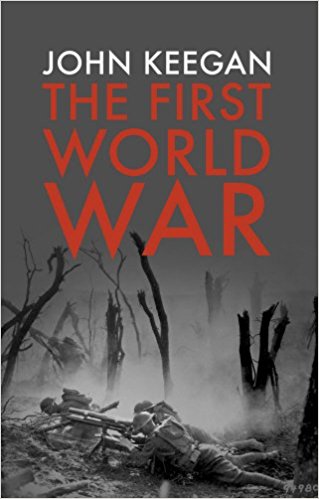
The First World War by John Keegan

The First World War created the modern world. A conflict of unprecedented ferocity, it abruptly ended the relative peace and prosperity of the Victorian era, unleashing such demons of the twentieth century as mechanized warfare and mass death. It also helped to usher in the ideas that have shaped our times–modernism in the arts, new approaches to psychology and medicine, radical thoughts about economics and society–and in so doing shattered the faith in rationalism and liberalism that had prevailed in Europe since the Enlightenment. With The First World War, John Keegan, one of our most eminent military historians, fulfills a lifelong ambition to write the definitive account of the Great War for our generation.
Probing the mystery of how a civilization at the height of its achievement could have propelled itself into such a ruinous conflict, Keegan takes us behind the scenes of the negotiations among Europe’s crowned heads (all of them related to one another by blood) and ministers, and their doomed efforts to defuse the crisis. He reveals how, by an astonishing failure of diplomacy and communication, a bilateral dispute grew to engulf an entire continent.
But the heart of Keegan’s superb narrative is, of course, his analysis of the military conflict. With unequalled authority and insight, he recreates the nightmarish engagements whose names have become legend–Verdun, the Somme and Gallipoli among them–and sheds new light on the strategies and tactics employed, particularly the contributions of geography and technology. No less central to Keegan’s account is the human aspect. He acquaints us with the thoughts of the intriguing personalities who oversaw the tragically unnecessary catastrophe–from heads of state like Russia’s hapless tsar, Nicholas II, to renowned warmakers such as Haig, Hindenburg and Joffre. But Keegan reserves his most affecting personal sympathy for those whose individual efforts history has not recorded–“the anonymous millions, indistinguishably drab, undifferentially deprived of any scrap of the glories that by tradition made the life of the man-at-arms tolerable.”
By the end of the war, three great empires–the Austro-Hungarian, the Russian and the Ottoman–had collapsed. But as Keegan shows, the devastation ex-tended over the entirety of Europe, and still profoundly informs the politics and culture of the continent today. His brilliant, panoramic account of this vast and terrible conflict is destined to take its place among the classics of world history.
With 24 pages of photographs, 2 endpaper maps, and 15 maps in text
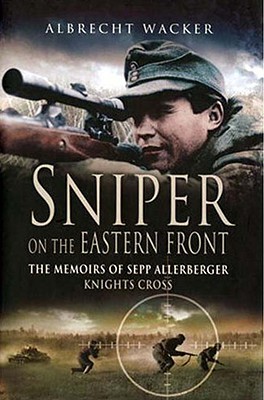
Sniper of the Eastern Front: The Memoirs of Sepp Allerberger Knights Cross by Albrecht Wacker

Josef “Sepp” Allerberger was the second most successful sniper of the German Wehrmacht and one of the few private soldiers to be honoured with the award of the Knight’s Cross.
An Austrian conscript, after qualifying as a machine gunner he was drafted to the southern sector of the Russian Front in July 1942. Wounded at Voroshilovsk, he experimented with a Russian sniper-rifle while convalescing and so impressed his superiors with his proficiency that he was returned to the front on his regiment’s only sniper specialist.
In this sometimes harrowing memoir, Allerberger provides an excellent introduction to the commitment in fieldcraft, discipline and routine required of the sniper, a man apart. There was no place for chivalry on the Russian Front. Away from the film cameras, no prisoner survived long after surrendering. Russian snipers had used the illegal explosive bullet since 1941, and Hitler eventually authorised its issue in 1944. The result was a battlefield of horror.
Allerberger was a cold-blooded killer, but few will find a place in their hearts for the soldiers of the Red Army against whom he fought.

Hiroshima by John Hersey

On August 6, 1945, Hiroshima was destroyed by the first atom bomb ever dropped on a city. This book, John Hersey’s journalistic masterpiece, tells what happened on that day. Told through the memories of survivors, this timeless, powerful and compassionate document has become a classic “that stirs the conscience of humanity” (The New York Times).
Almost four decades after the original publication of this celebrated book, John Hersey went back to Hiroshima in search of the people whose stories he had told. His account of what he discovered about them is now the eloquent and moving final chapter of Hiroshima.
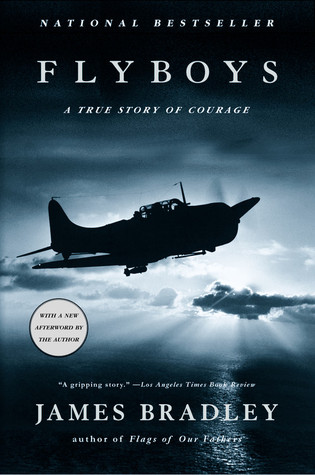
Flyboys: A True Story of Courage by James Bradley

This book doesn’t have a Synopsis on Goodreads

Lastly I want to add a couple books that are about Australians in the War seen as it is ANZAC Day so I need some books that include the ANZACs that we are remembering today.
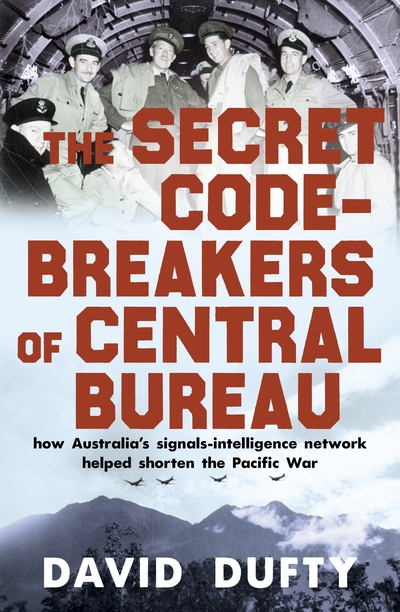
The Secret Code-Breakers of Central Bureau: How Australia’s Signals-intelligence network helped short the Pacific War
Non-Fiction

This is a rich historical account of a secret and little-understood side of the war, interwoven with lively personalities and personal stories. It is the story of Australia’s version of Bletchley Park, of talented and dedicated individuals who significantly influenced the course of the Pacific War.
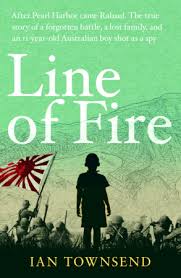
Line of Fire by Ian Townsend
Non-Fiction

The little known and intriguing WWII story of an eleven-year-old Australian schoolboy who was shot by the Japanese in Rabaul in 1942 as a suspected spy.
It’s hard to imagine this story as being part of our past, but in 1942, an eleven-year-old Australian boy, Richard Manson, and his parents either side of him, were shot by the Japanese for suspected spying in Rabaul in Papua New Guinea.
Acclaimed 4th Estate author and award-winning science journalist Ian Townsend has uncovered a fascinating story of WWII, little known to most Australians. Centring on the hotspot (in every sense) that was Rabaul in WWII, his account is an intriguing narrative, which weaves together Australian history, military conflict and science – with volcanology being the peculiar science which drew the Americans, Japanese and Australians together in conflict in the Pacific in the 1940s – and the story of one ordinary but doomed Australian family.
Like The Hare with Amber Eyes, this is a fascinating work of narrative non-fiction, a story of spies, volcanoes, history, conflict and war, set against the romantic, dramatic and ultimately tragic backdrop of Rabaul in WWII.
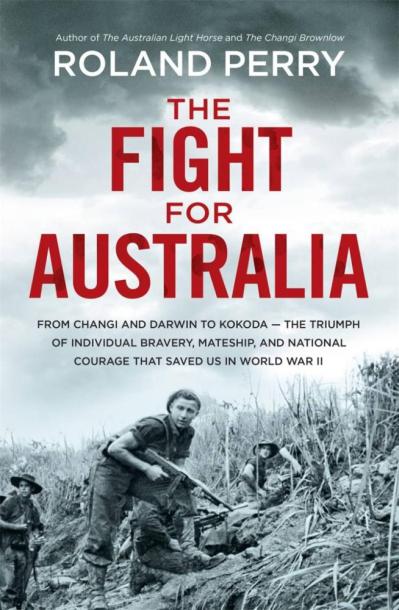
The Fight for Australia by Roland Perry
Non-Fiction

From Changi and Darwin to Kokoda – The Triumph of Individual Bravery, mateship, and National courage that saved us in World War II
Well that is all for this post. I know it’s long but there were tonnes of books I wanted to share and I knew this was going to be long, so that is why I only put the Goodreads Synopsis and didn’t talk about each book myself as that would be even longer!






I’m intrigued by All the Lights I Cannot See because everyone seems to love it and I’ve own Code Name Verity but I still don’t decide on that, I would really like to read more historical fiction too😊
LikeLiked by 1 person
Code Name Verity is probably one of the next ones I will pick up as so many people love it. When I read All the Lights I Cannot See it will probably be after Code Name Verity.
LikeLiked by 1 person
That’s great! I would love to know what you think about it 😊
LikeLiked by 1 person
Will definitely review it on here when I get to it! 👌🏻😊
LikeLiked by 1 person
I am really interested in All the Lights We Cannot See and Boy in Stripped Pajamas. I have both books on my shelf so I just need to make time for them. Great post. I will definitely be adding more of this to my TBR.
LikeLiked by 1 person
Sounds like some good choices and awesome. Hope you enjoy them. 😊
LikeLike
I’d start with All the Light We cannot see which is one of my all time favourites. I’d also put in The Narrow Road to the Deep North by Richard Flanagan which is incredible too. Good luck with your reading.
LikeLiked by 1 person
That’s awesome. Thank you. 😊
LikeLiked by 1 person